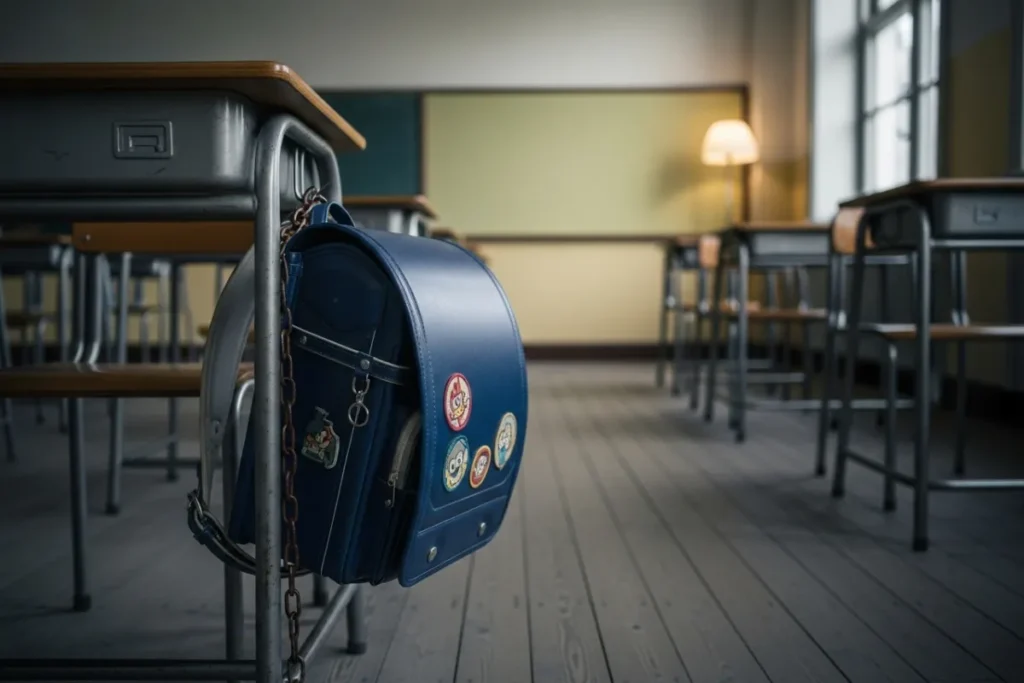This blog post explores the pressing issues surrounding Heavy Schoolbags, examining not only their physical weight but also the emotional and psychological burdens they symbolize in the modern education system. As students navigate increasing academic expectations, the implications for their health and well-being are significant. Unpacking the history of Heavy Schoolbags and the pressures they represent, we highlight the role of educational policies and societal expectations in shaping a student burden culture. Solutions such as digital learning tools and locker systems are discussed, emphasizing the need for a holistic approach to education that prioritizes student wellness alongside academic achievement. Join us in re-evaluating the landscape of educational tools and policies to foster an environment where learning thrives and students feel supported.
Table of Contents
The Weight of a Heavy Schoolbag
The phenomenon of Heavy Schoolbags has become a focal point in modern educational discourse, reflecting deeper issues beyond mere physical weight. The heavy school bags debate encapsulates concerns over not only the tangible burden of books and supplies but also the intangible pressures that students face in contemporary education. This burden can be seen as a metaphorical representation of the overwhelming expectations placed on young learners, manifesting in increased anxiety and stress levels.
As students navigate the complexities of the school system, the symbolism of education pressure becomes evident through their backpacks. The physical weight carried is indicative of the academic challenges they are expected to overcome, alongside the social norms that dictate educational success. This synthesis of academic and social pressure contributes significantly to what many describe as a student burden culture, where children are consistently striving to achieve higher results amid mounting demands.
The history of backpacks reveals a shift in educational philosophy, where the emphasis has evolved from holistic learning to quantitatively measured success. In this context, children are faced with an increasing load, both corporeal and psychological, as they carry the weight of expectations from educators, parents, and peers alike. Discussions around the Heavy Schoolbags debate often highlight the role of parents and teachers in fostering a more supportive learning environment that mitigates this pressure (see e.g. The Impact of Backpack Loads on School Children, NIH).
Ultimately, understanding the cultural implications of Heavy Schoolbags goes beyond mere critique of the school system. It requires an exploration of what these bags symbolize in terms of student well-being. As we delve deeper into this conversation, it becomes crucial to consider the various facets of education that impact the mental and physical health of children, alongside the perceptions of their educational journey.
The Evolution of the Schoolbag
The Heavy Schoolbag has undergone significant transformations since its inception, reflecting broader trends in education and technology. Initially, the backpacks of students were rudimentary, simply designed as basic carriers for essential texts and materials. The history of backpacks reveals that these early designs were practical but lacked the ergonomic considerations necessary for young users. Over the decades, however, as educational approaches evolved, so did the functionality and complexity of Heavy Schoolbags.
The emergence of progressive educational policies has led to an increasingly rigorous curriculum that demands more resources from students. With the shift towards a comprehensive education system, children are expected to carry not only textbooks but also an array of supplementary materials, such as workbooks, notebooks, and various technology devices. This has intensified the Heavy Schoolbags debate, as the increasing weight of backpacks has become a symbol of the education pressure students face today.
With the advent of the digital age, many students now carry laptops and tablets in addition to traditional items. This further complicates the issue, as these devices contribute significantly to the overall student burden culture. Parents and educators are becoming increasingly concerned about the ramifications of this weight on children’s health, with potential implications, including musculoskeletal issues and diminishing enthusiasm for learning.
In this context, the evolution of the Heavy Schoolbag serves as a critique of the current school system and its approach to student requirements. The pressure for academic achievement, coupled with the demands of modern education, has turned the once simple backpack into a heavy repository of knowledge and technology that may weigh down the very students it is meant to support. It prompts a reevaluation of educational policies and practices, encouraging discussions about finding a balance that alleviates physical burdens while promoting effective learning.

Physical Consequences of Carrying a Heavy Schoolbag
The heavy school bags debate has gained significant traction in recent years, as the physical toll on children becomes increasingly evident. Studies indicate that carrying excessively heavy backpacks can lead to injuries such as muscle strain, back pain, and even spinal issues. Children, particularly those in formative years, are at a greater risk as their bodies are still developing. The weight of a school bag often exceeds 10-15% of a child’s body weight, which may result in short-term discomfort and long-term health complications if not addressed.
One of the most noticeable physical consequences associated with heavy school bags is poor posture. As students hunch over to support the weight on their backs, this ‘student burden culture’ fosters dysfunctional spinal alignment, leading to chronic issues as these individuals transition into adulthood. Additionally, the act of unevenly distributing weight—common in rush-hour scenarios—can exacerbate this problem, resulting in conditions like scoliosis or other structural deformities. The pressure exerted by heavy bags emphasizes the importance of a critical school system critique, urging educational authorities to reconsider the load placed on students.
Moreover, beyond immediate physical pain, the long-term ramifications of this strain can deter children from engaging in physical activities, further heightening the education pressure symbolism associated with academic success. Students may become discouraged if they associate their school experience with discomfort. Thus, it is essential for parents, educators, and policy-makers to acknowledge these risks and promote more ergonomic designs in backpacks, alongside encouraging a curriculum with manageable workloads. Ultimately, addressing the physical consequences of heavy school bags is crucial for safeguarding the health and well-being of our children.
Emotional and Psychological Impact
The debate surrounding heavy school bags extends beyond merely physical discomfort. For students, the emotional and psychological implications of carrying such burdens can be profound. The heaviness of these school bags often mirrors the emotional weight of academic pressure. Children are frequently faced with increasing expectations from educators and parents alike, which can foster a sense of stress and anxiety that permeates their daily lives.
As students navigate the demands of the school system, they may feel a relentless burden resulting from high-stakes testing and the need to excel in every subject. This pressure symbolizes not just their educational journey but the larger cultural expectation surrounding achievement, which reinforces the student burden culture. When their expectations outstrip their capacity to cope, children may experience feelings of inadequacy, which can undermine their self-esteem and motivation towards learning.
The symbolism embedded in heavy school bags is critical to understanding this emotional landscape. It represents the struggles faced by many young learners who contend with a constant battle against anxiety and fear of failure. The pressure to conform to educational norms may place a child’s mental health at risk, leading to burnout and disengagement, which can have lasting effects on their academic performance and overall well-being.
Moreover, tackling the issue of heavy school bags leads to an examination of the history of backpacks in the educational context. As these bags grew in size and weight, so too did the associated expectations placed on students, intertwining their physical burden with emotional distress. A holistic approach requiring a critique of our existing school systems is vital in alleviating these issues, allowing for an educational environment that prioritizes mental health and well-being alongside academic success.

The Role of Educational Policies
Educational policies significantly influence the heavy school bags debate, as they dictate the curriculum demands placed on students. Many schools develop rigorous academic programs designed to fulfill educational standards, often without considering the individual needs of students. This structure frequently leads to an overwhelming amount of materials being required by students, effectively increasing the physical burden they must carry. Such policies often prioritize standardized testing and uniformity over personalized learning, thereby amplifying the pressures experienced by students.
The stringent nature of testing standards contributes not only to the academic pressure felt by students but also to the emotional anxiety associated with academic performance. As students strive to meet these expectations, they are compelled to lug around textbooks, notebooks, and other materials that can weigh heavily on their backs. This scenario exemplifies an education pressure symbolism, encapsulating a broader critique of the school system, which sometimes appears to favor compliance and performance over student well-being.
Additionally, there is often a lack of accommodations for students with diverse learning needs within the educational system. Such disparities create a student burden culture wherein some children, particularly those requiring individualized support, find themselves at a disadvantage. The failure to adapt educational policies to support these variations can lead to academic struggles and heightened stress, further impacting their overall experience at school.
In an increasingly competitive educational landscape, policymakers must scrutinize how their regulations contribute to the overall burden on students. A critical evaluation of the history of backpacks and the way they have evolved in educational contexts would provide insight into the types of resources utilized by students today. By addressing these issues, it is possible to mitigate the impact of heavy school bags on student health and well-being, ultimately fostering a more supportive learning environment.
Societal Expectations and Class Issues
The heavy school bags debate is often intertwined with broader societal expectations surrounding education and success. In many cultures, achieving academic excellence is synonymous with a child’s future opportunities, leading to immense pressure on students to excel. This pressure often translates into expectations for children to carry multiple textbooks, notebooks, and other educational materials, creating a culture where a physically heavy backpack becomes a metaphorical representation of educational burdens.
This situation is further complicated by class issues, as socio-economic status plays a critical role in determining what resources children are expected to bring to school. Many families, particularly those struggling financially, face an array of educational pressures that can impact their children’s experiences and outcomes. These families may not have the means to afford supplementary educational materials or resources, which enhances the educational pressure symbolism associated with school performance. Consequently, children from low-income households often carry weighty backpacks filled with outdated textbooks alongside their more affluent peers, who may have access to newer technologies and lighter resources. Such disparities can create class-based educational inequities that directly affect both the physical and psychological burdens on students.

Solutions and Alternatives
The issue of heavy school bags has gained significant attention, leading to a thorough re-evaluation of traditional educational practices. As the heavy school bags debate progresses, various solutions and alternatives have surfaced from educators, parents, and health professionals aimed at alleviating the physical burden on students. One promising approach is the increased adoption of digital learning tools. E-books, online resources, and educational apps reduce the need for physical textbooks, thereby significantly lightening the weight students carry to and from school.
Moreover, the implementation of locker systems within schools can play a pivotal role in addressing the heavy school bag dilemma. By allowing students to store their books and materials at school, locker systems enable them to carry only what is necessary for a particular day, thus minimizing the strain on their backs. Educators have noted that providing sufficient storage facilities encourages students to manage their belongings more effectively, ultimately reducing the overall student burden culture.
In addition to digital solutions and infrastructure enhancements, it is essential to involve school policies that prioritize student wellness. Schools can implement guidelines regarding the maximum weight of school Heavy Schoolbag , thereby promoting a more student-friendly approach to education. These policies can also facilitate regular reviews of the curricula to ensure that the required materials are essential and relevant. By questioning the necessity of certain items, the school system critique becomes an integral part of enhancing the educational experience by alleviating unnecessary burdens on students.
It is important to recognize that this issue is multifaceted; therefore, collaboration among stakeholders—parents, educators, and health professionals—is crucial. Many health professionals advocate for periodic assessments of students to monitor their physical development and assess any impacts of carrying Heavy Schoolbag. Through a collective effort to reform how we view education and student responsibility, a healthier balance can be achieved, ultimately promoting a more productive learning environment.
Shifting Perspectives: Redefining Education and Its Tools
The Heavy Schoolbag debate serves as a microcosm of broader issues within the education system, particularly concerning the well-being of students. In recent years, there has been a growing acknowledgment that the traditional focus on academic performance often overshadows the need for nurturing the holistic development of learners. This shift in perspective urges educators, policy makers, and parents to reassess the tools used in education, including the very backpacks students carry. Instead of viewing these bags merely as vessels for books and materials, we must consider them as symbols of the education pressure that students face.
Historically, the backpacks children carry have evolved significantly, reflecting changes in educational needs and societal expectations. The history of backpacks highlights the transformation from simple satchels to complex Heavy Schoolbag filled with not just textbooks but also digital devices, art supplies, and personal items. Today, these heavy loads symbolize the cumulative demands placed on young learners, contributing to a culture that often prioritizes academic achievement over mental and physical health.
This calls for a critical examination of student burden culture—why must children carry such Heavy Schoolbags? What does this say about our values within the educational system? Redefining education involves evaluating the necessity of every tool we provide. It proposes a model where learning environments are more attuned to the physical and emotional needs of students, mitigating the overwhelming pressure they experience. This holistic approach champions a balance between academic rigor and the well-being of children, thus potentially transforming the narrative surrounding education. Addressing the heavy school bags issue is not merely a matter of physical strain; rather, it holds deeper implications for how we perceive success and well-being in education.
Conclusion: Carrying Forward Change
As we have explored throughout this post, the Heavy Schoolbags debate is not merely about weight; it is a reflection of the broader pressures exerted by the education system on our children. These burdens symbolize a culture of education pressure that often prioritizes academic achievement over the well-being of students. The history of backpacks in education reveals a significant shift towards heavier and more cumbersome designs that, rather than enhancing learning, may instead hinder children’s ability to enjoy their educational journey.
The critique of our school system emphasizes the need for a re-evaluation of what it means to support student development. The student burden culture that prevails today can have profound effects on children’s physical health, mental well-being, and overall learning experiences. As the weight of their Heavy Schoolbags grows heavier, so does the pressure they feel to succeed. This phenomenon necessitates a collective response from parents, educators, and policymakers to ensure that the focus remains on nurturing rather than burdening our youth.
Collective action is imperative to initiate change. Schools should reassess their curriculum frameworks and consider the genuine impacts of physical weight on children’s health. Educators must strive to engage students creatively, thereby reducing dependency on overly heavy materials. Furthermore, parents can advocate for their children by encouraging school systems to implement measures that lighten the load, such as digital resources and more efficient organizational practices.
In conclusion, addressing the issue of Heavy Schoolbags is a crucial step toward fostering an educational environment that prioritizes health and well-being. It is essential for all stakeholders involved in children’s education to collaborate and advocate for impactful changes that alleviate physical and psychological burdens. By doing so, we not only lighten the load on our children’s backs but also pave the way for a brighter future for learning.
Everything around you has an amazing story… Follow our journey at CommaNote to discover the hidden history behind ordinary things!







